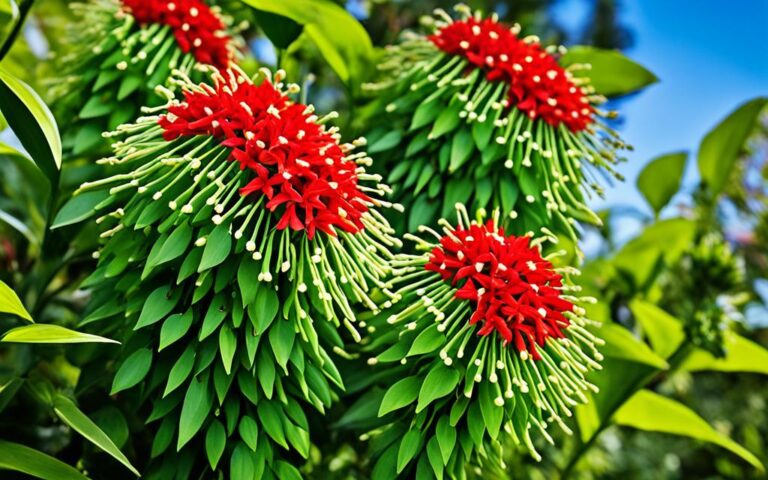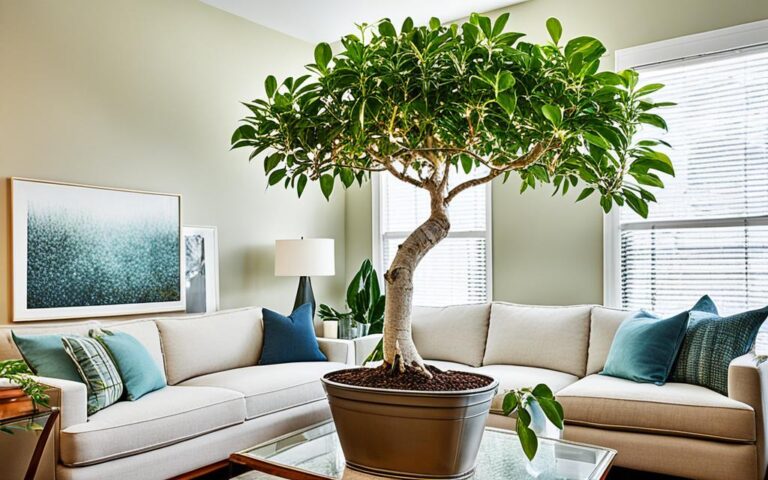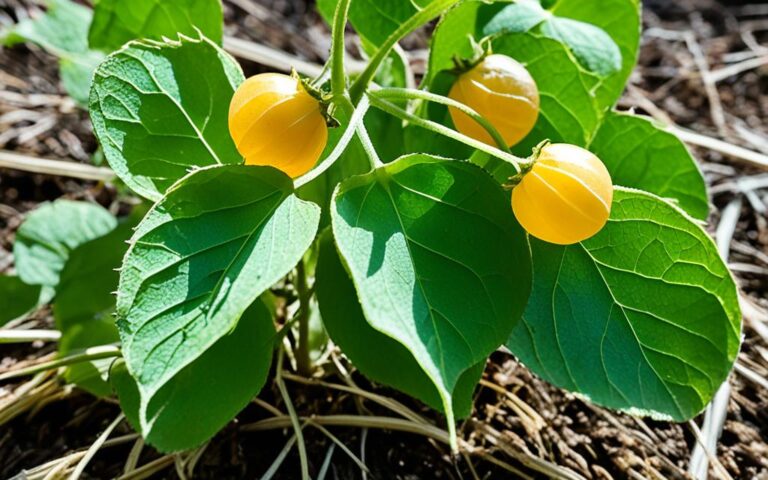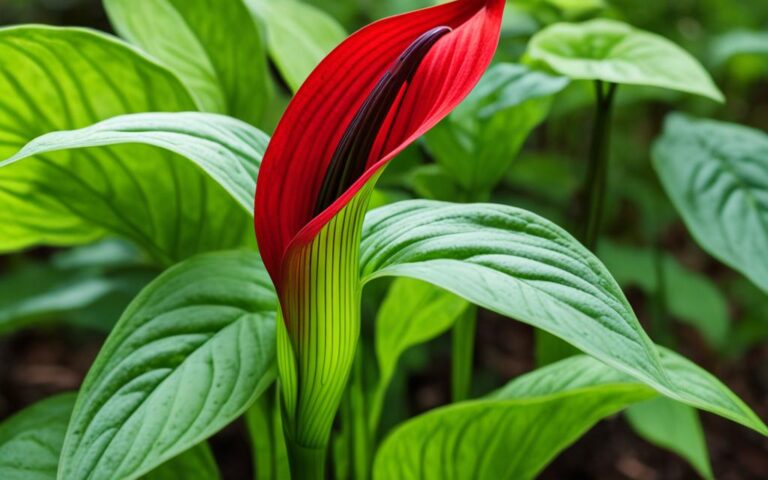Fern Plant: A Guide to Growing and Care
Ferns have been a favorite among gardeners for centuries. They are known for their beautiful new fronds that come out every spring. With many evergreen and deciduous types, they can grow in both shade and sunlight. This makes them a great choice for any indoor or outdoor space.
Despite needing little care, ferns are a great option for those who want a lush, easy-to-maintain plant. This guide is perfect for both experienced gardeners and beginners. It will teach you how to grow and care for different fern species.
Key Takeaways
- Ferns offer a diverse range of evergreen and deciduous varieties suitable for various garden and indoor settings.
- These resilient plants can adapt to both shady and sunny conditions, making them a versatile choice for gardeners.
- Ferns are relatively low-maintenance, requiring minimal care compared to many other foliage plants.
- Proper selection of fern species and attention to their specific growing needs is crucial for successful cultivation.
- Ferns can thrive as both indoor and outdoor plants, offering a lush and dramatic addition to any space.
Introduction to Fern Plants
Ferns are captivating plants that have fascinated gardeners and nature lovers for centuries. They are among the oldest and most diverse living plants, with 10,500 to 15,000 species. These ancient plants lived alongside dinosaurs, making them true living fossils.
Popularity and Appeal of Ferns
Ferns are loved for their lush foliage and the way their fronds open in spring. Their beauty and easy care make them popular in gardens and homes. They also appear in textiles, pottery, and jewelry, showing their cultural importance.
In the Victorian era, people loved collecting and showing ferns, a trend called “pteridomania.” Today, ferns still charm gardeners and design fans with their timeless beauty and flexibility.
Interesting Facts About Ferns
- Tree ferns can grow 10 to 25 meters (30 to 80 feet) tall.
- Costa Rica might have over 900 fern species, almost twice as many as in North America north of Mexico.
- Tropical rainforests can have more than 100 fern species in just a few hectares.
- Some fern families, like Marattiaceae, Gleicheniaceae, and Cyatheaceae, live mainly in tropical areas.
- While fern invasions are rare, some species like bracken (Pteridium) and water spangles (Salvinia) can become invasive.
These interesting facts show how diverse and adaptable ferns are. They make them truly remarkable in the plant world.
Common Fern Species and Varieties
There are over 10,000 fern species found all over the world. These plants have been around for over 70 million years. They come in many shapes, sizes, and types. You can find both evergreen and deciduous ferns, each with its own look and growth pattern.
Evergreen and Deciduous Fern Types
Evergreen ferns like the Asplenium nidus (bird’s nest fern) keep their leaves all year. They add greenery to your space all the time. On the other hand, deciduous ferns such as the Matteuccia struthiopteris (ostrich fern) lose their leaves in the fall. They rest during the cold months.
Unique Characteristics of Different Ferns
Ferns are not just evergreen or deciduous. They have many special features. For example, the Davallia fejeensis (rabbit’s foot fern) and Polypodium formosanum (caterpillar fern) have unique rhizomes. The Brazilian Tree Fern can grow 3-5 feet tall, making it a good choice for indoors. The Giant Fern’s fronds can be up to 20 feet long and 8 feet wide, showing how different ferns can be in size.
| Fern Species | Characteristics | Typical Size |
|---|---|---|
| Hart’s-tongue Fern | Evergreen, strap-like fronds | Up to 18 inches long |
| Silver Lady Fern | Deciduous, silvery-gray fronds | 3-4 feet tall |
| Golden Zebra Fern | Evergreen, horizontal fronds with yellow stripes | 4 feet long, 2 feet tall |
| Tasmanian Cup Fern | Deciduous, large fronds used to support orchids | One of the largest fern species |
With so many fern species and fern varieties, gardeners can pick the right ones for their space. Whether you want evergreen ferns or deciduous ferns, there’s something for everyone. These plants come in all sizes, from small to tall, offering many fern characteristics to explore in your garden or home.
Anatomy of the Fern Plant
Ferns are fascinating plants with a unique anatomy. They are different from flowering plants. They don’t have true stems, flowers, or fruits. Instead, they have lush, textural foliage called fronds.
These fronds grow from the plant’s rhizome, an underground stem. The rhizome produces roots and new growth.
Description of Leaves, Stems, and Fronds
The fronds of ferns have many leaflets, or pinnae. These are arranged along the frond’s rachis, the central stalk. Fern fronds can be very small or very large, from 1 cm to 5 m.
Some ferns have just one frond, while others have many. This variety adds to their beauty.
Special Features of Fern Plants
- Fern bodies have three main parts: the rhizome, the fronds, and the sporangia.
- The rhizome can grow underground or up a tree.
- The stipe, or stem, of the frond can vary in texture and color.
- Young fern fronds, known as Koru, are tightly coiled for protection.
- The lamina, or flat, green leafy blade of the frond, includes the rachis and the pinnae.
- Pinnae or leaflets may be arranged alternately or in opposite pairs along the midrib.
Understanding fern anatomy helps gardeners care for and appreciate these ancient plants.
Ideal Growing Conditions for Fern Plants
Ferns are unique and captivating plants that need specific conditions to thrive. To keep your fern plants healthy and vibrant, you must provide the right environment. Soil and moisture are key to their ideal growing conditions.
Ferns love moist, well-drained soil full of organic matter. Proper humidity levels recommended for ferns are 40-50% relative humidity. This can be hard in some homes, where moisture levels drop to 5 to 10 percent. To keep humidity up, use a pebble tray or a humidifier near your ferns.
Most ferns prefer indirect or dappled sunlight. Direct sunlight can burn their delicate leaves. Ferns have been cultivated for over 300 million years, with more than 10,000 living species available. Each fern has its own unique light needs.
| Fern Variety | Light Preference | Hardiness Zone |
|---|---|---|
| Japanese Holly Fern (Cyrtomium falcatum) | Partial shade | USDA Zones 6 to 11 |
| Button Fern (Pellaea rotundifoli) | Partial shade | Typically reaches about a foot in height |
By giving your ferns the right soil, moisture, and light, you can create a perfect environment. This lets your fern plants thrive and add beauty to your indoor or outdoor spaces.
Light Requirements for Fern Plants
Ferns love the shade and need bright, indirect light to grow well. Putting them in direct sunlight can harm their leaves, making them dry and break easily. They do best in light that’s similar to their natural home in the woods.
Indirect vs. Direct Sunlight Needs
Ferns need indirect light to do well. A spot with east- or north-facing windows is perfect for them. If they don’t get enough light, they might turn yellow and grow slowly. Adding a grow light for a few hours a day can help them indoors.
But, direct sunlight is bad for ferns. Its strong rays can burn their leaves, making them dry and damaged. Ferns can’t handle being in direct fern direct sunlight for a long time.
| Light Requirement | Ideal Condition | Outcome |
|---|---|---|
| Indirect Light | East- or north-facing window | Promotes healthy growth and vibrant foliage |
| Direct Sunlight | Avoid direct exposure | Can cause damage and drying of fronds |
By giving ferns the right fern light requirements, gardeners can keep them looking lush and green.
Temperature and Humidity for Fern Plants
Ferns are delicate plants that need specific conditions to grow well. To keep your fern healthy, make sure it has the right temperature and humidity.
Ferns like moderate temperatures. The best daytime temperature is between 65°F and 75°F (18.3°C and 24°C). At night, they prefer it a bit cooler, around 55°F (12.8°C). If it gets colder than 50°F (10°C), ferns can be damaged or even die.
Keeping the air moist is also key for ferns. They come from moist, tropical places and need more humidity than many houseplants. You should keep the humidity between 40% and 50% for indoor ferns. If your home is too dry, you might need a humidifier, mist the plants, or put them on pebble trays.
| Fern Variety | Ideal Temperature Range | Ideal Humidity Range |
|---|---|---|
| Boston Fern | 65-75°F (18.3-24°C) | 80% or higher |
| Staghorn Fern | 65-75°F (18.3-24°C) | 40-50% |
| Maidenhair Fern | 65-75°F (18.3-24°C) | 40-50% |
| Bird’s Nest Fern | 65-75°F (18.3-24°C) | 40-50% |
By keeping the right temperature and humidity, you can make a great home for your ferns. This will help them stay healthy and look great for a long time.
Soil and Watering Needs for Fern Plants
Ferns need a rich, well-draining soil mix full of organic matter. Use a potting mix made for houseplants or mix peat moss, compost, and perlite or coarse sand. Make sure the soil doesn’t get too dense or waterlogged to prevent root rot.
Ideal Soil Mix for Ferns
For the best fern soil mix, combine these ingredients:
- Peat moss: Keeps moisture in and adds acidity
- Compost: Gives nutrients and organic matter
- Perlite or coarse sand: Helps with drainage and air flow
Proper Watering Techniques
Keep the soil of fern watering needs moist but not too wet. Check the soil often and water when it starts to dry out a bit. Ferns also do well with some misting to keep the air around them humid.
Too much water can harm ferns, causing yellow leaves and root issues. Not enough water can make them wilt, like Boston ferns losing their leaves. Always use water at room temperature to avoid damaging the leaves.
“Ferns require consistently moist but not saturated soil for optimal growth.”
Getting the watering right is key for the health and long life of these lovely plants.
Fern Plant Propagation Methods
Ferns don’t grow from seeds like other plants. They make spores on the underside of their leaves. Growing ferns from spores is a special way that can take about two years. But, dividing and transplanting existing ferns is faster and easier.
Growing Ferns from Spores
Starting ferns from spores needs patience and care. Look for the small capsules called sporangia on mature fronds. Harvest these spores and put them on a moist, sterile medium like peat pellets.
Keep the spores moist and in a humid spot for germination. After a few weeks or months, the spores will grow into a prothallus. This leads to new fern plants.
Dividing and Transplanting Ferns
Some ferns, like the Asplenium bulbiferum, have small plantlets called bulbils. For most ferns, dividing the rhizomes or offsets is the best way to propagate. Do this in the spring when the plant is growing well.
Divide the rhizomes or offsets and replant them in containers or the garden. This keeps established fern plants healthy and strong.
| Propagation Method | Time to Maturity | Difficulty Level |
|---|---|---|
| Spores | 12-24 months | High |
| Division | 3-6 months | Medium |
| Bulbils | 6-12 months | Low |
Knowing how to propagate ferns helps gardeners pick the best method for their skill level and time frame for new plants.
Care and Maintenance of Fern Plants
Fern plants are loved for their lush, green leaves. They need some care to stay beautiful. Regular pruning and grooming are key.
Pruning and Grooming Techniques
To keep ferns healthy and looking good, remove dead, damaged, or discolored leaves often. Use sharp scissors or pruners for clean cuts. This prevents pests and disease. Evergreen ferns need spring grooming, while deciduous ferns should be cut back in the fall.
Proper fern pruning and grooming keep your plants neat and healthy. It also encourages new growth. By taking care of your ferns, you can enjoy their beauty for many years.
| Fern Variety | Pruning Recommendation |
|---|---|
| Boston Fern | Prune in spring to remove dead or damaged fronds |
| Kimberly Queen Fern | Prune in fall to cut back fronds that have died back |
| Macho Fern | Prune in spring to maintain a neat, compact appearance |
“Ferns are relatively low-maintenance plants and can live for over a century if properly cared for, highlighting their longevity and resilience.”
Common Pests and Diseases of Fern Plants
Fern plants are usually tough, but they can face common houseplant problems. Knowing about the pests and diseases that affect ferns is key to keeping them healthy.
About 70% of fern health issues come from fungal diseases. Leaf spot is the top problem, hitting 45% of ferns. Root rot, caused by too much water, affects 30% of ferns. Bacterial wilt, which makes leaves wilt and turn color, hits about 25% of ferns.
Viral diseases like mosaic virus affect 15% of ferns, showing a yellow and green pattern on leaves. Aphids, a common pest, infest up to 20% of ferns, causing curled and yellow leaves. Spider mites, found in 10% of ferns, lead to speckled and yellow leaves with webs.
| Pest/Disease | Prevalence | Symptoms |
|---|---|---|
| Fungal Leaf Spot | 45% | Discolored, spotted leaves |
| Fungal Root Rot | 30% | Wilting, yellowing, stunted growth |
| Bacterial Wilt | 25% | Leaf wilting and discoloration |
| Mosaic Virus | 15% | Yellow and green mosaic pattern on leaves |
| Aphids | 20% | Leaf curling and yellowing |
| Spider Mites | 10% | Leaf speckling, yellowing, and webbing |
Quickly spotting and treating pests or diseases with the right products is key. Keeping ferns in good conditions, like right watering, air flow, and light, can also prevent many problems.
“Taking proactive measures to monitor and address any pests or diseases that arise is crucial for the long-term health and vitality of fern plants.”
Fertilizing Fern Plants
Ferns are delicate plants that need careful fertilization. They do well with regular feeding during the growing season. But, it’s important to not overdo it. A balanced, water-soluble fertilizer at half-strength once a month is perfect for them.
This type of fertilizer gives them the key nutrients they need. These include nitrogen, phosphorus, and potassium. These nutrients help ferns grow strong and stay healthy.
Ferns also need micronutrients like iron, magnesium, and calcium. These help with healthy growth and keeping the leaves colorful. Without these, ferns might grow slowly or lose their color.
Macronutrients and Micronutrients for Fern Plants
- Macronutrients: Nitrogen (N), Phosphorus (P), and Potassium (K) – these primary nutrients support overall plant growth and development.
- Micronutrients: Iron (Fe), Magnesium (Mg), Calcium (Ca), and others – these secondary nutrients contribute to specific physiological processes and visual appeal.
Don’t over-fertilize ferns, as it can harm them. It’s also wise to skip fertilizer in the winter when they’re dormant. Ferns need less food during this time.
“Proper fertilization is crucial for ferns in containers and hanging baskets as they have limited nutrients available to pull from the soil.”
By using a balanced approach to fern plant fertilizer, gardeners can make sure their ferns get the right fern macronutrients and fern micronutrients. This helps them thrive and adds beauty to any space.
Pest and Disease Control for Fern Plants
Fern plants are usually pest and disease resistant. But, it’s important to watch them closely and treat problems quickly. This way, small issues don’t turn into big ones.
Some pests like spider mites, aphids, and scale insects can bother ferns. You can fight them with insecticidal soaps or horticultural oils. These products kill pests without hurting the plants. Fungal diseases like leaf spot or mildew can be stopped with fungicides that have sulfur or copper in them.
Keeping your ferns in the best conditions helps prevent diseases. Make sure they get the right amount of water, air, and keep things clean. Fixing problems fast and using a mix of pest control methods will keep your ferns healthy and bright.
| Pest or Disease | Symptoms | Control Measures |
|---|---|---|
| Spider Mites | Webbing on the undersides of leaves, discoloration, and stunted growth | Insecticidal soap, horticultural oil |
| Aphids | Sticky, shiny leaves, stunted growth, and wilting | Insecticidal soap, horticultural oil |
| Scale Insects | Small, hard-shelled insects on stems and leaves, yellowing, and wilting | Insecticidal soap, horticultural oil |
| Leaf Spot | Brown or black spots on leaves, leading to discoloration and damage | Fungicides with sulfur or copper |
| Mildew | White, powdery growth on leaves and fronds | Fungicides with sulfur or copper |
By keeping an eye on your ferns, fixing problems quickly, and keeping their environment right, you can keep them healthy and bright. With the right care, these beautiful plants can flourish and make your spaces look lush and green.
Fern Plants for Indoor Growing
Ferns are great for indoor plants, bringing lush greenery to any room. Popular indoor fern varieties include the bird’s nest fern, Boston fern, and maidenhair fern. These indoor ferns do well in the humidity and indirect light of many homes, if you take care of them right.
Other indoor-friendly ferns are the rabbit’s foot fern, button fern, and Japanese holly fern. The Pleated Bird’s Nest Fern has bright green leaves and a wavy texture, helping to clean the air. Lace Fern and Blue Star Fern are also great for indoor plants.
Popular Indoor Fern Varieties
- Living Lace™ Davana blue star fern: 10 to 14 inches tall, 16 inches wide
- Alligator fern: 1 to 2 feet tall, 3 to 5 feet wide
- Rare hybrid fern: 10 to 20 inches tall, up to 34 inches wide
- Living Lace™ Victoria Japanese bird’s nest fern: 1 to 2 feet tall, 12 to 18 inches wide
- Emerald Vase Boston Fern: 2 to 3 feet tall and wide
- Button fern: 12 to 18 inches tall and wide
- Ribbon fern: 18 to 24 inches tall and wide
- Kangaroo paw fern: 1 foot tall, 2 to 4 feet wide
Choosing the right indoor fern species is crucial for growing them at home. Most indoor ferns need high humidity, indirect light, and regular watering to do well.
Benefits of Growing Fern Plants
Fern plants bring many benefits to gardens or indoor spaces. Their lush foliage contrasts beautifully with flowers, adding tranquility. They are more than just pretty to look at.
One big plus of fern plant benefits is how they clean the air. Boston Ferns remove indoor pollutants like formaldehyde and toluene. They also help keep the air moist, acting as natural humidifiers.
For those who love plants but don’t have much time, ferns are perfect. Boston Ferns are easy to care for and can thrive in many places. They’re great for busy people who want to keep their spaces green.
Ferns also have deep historical and cultural value. They’ve been around since dinosaurs, linking us to the past. Growing them helps keep their history alive and supports plant diversity.
These plants do more than just look good. They provide shelter and shade for other creatures, helping ecosystems stay balanced. Ferns are key to keeping nature in harmony.
Whether you’re a pro at gardening or just starting, the benefits of growing fern plants are worth learning about. They clean the air, are easy to care for, and have a rich history. Ferns are rewarding plants for anyone who grows them.
Conclusion
Ferns are both versatile and captivating, fitting well in indoor and outdoor settings. They come in over 11,500 species, offering a wide range of looks and benefits. Gardeners and plant lovers find them appealing for their ancient history, ability to clean the air, and striking leaves.
To make ferns flourish, you need to know their light, moisture, and soil needs. With the right care, ferns can be a joy for many years. They show how plants can be tough and adaptable.
In short, ferns add a special touch to any plant collection. By meeting their needs, you let them show their beauty and resilience. This brings a bit of nature’s wonder to your space.






